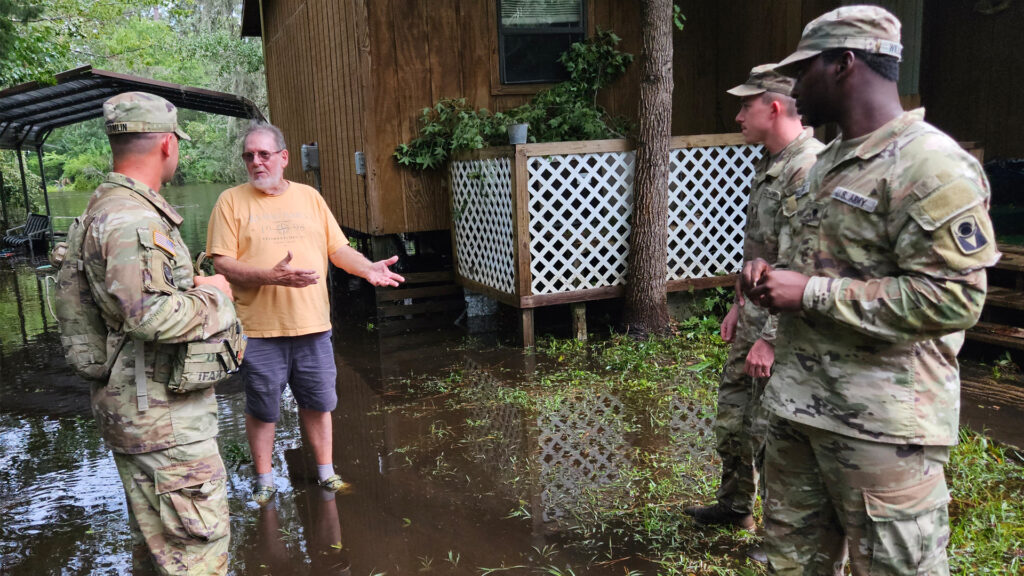A roundup of news items related to climate change and other environmental issues in Florida:
Biden approves Florida disaster declaration for Hurricane Idalia | Orlando Sentinel

Gov. Ron DeSantis toured the damage from Hurricane Idalia firsthand Thursday and confirmed the first death from the storm as President Joe Biden declared a major disaster area for the heaviest-hit Florida counties.
DeSantis visited Cedar Key, Horseshoe Beach and Steinhatchee in the Big Bend area of the state along with Deanne Criswell, the administrator of the Federal Emergency Management Agency, who said damage assessments were being done by air and by satellite.
DeSantis also was joined at Steinhatchee by his wife, first lady Casey DeSantis, who oversaw the Florida Disaster Fund that raised $63 million for relief efforts in the wake of Hurricane Ian last year.
Idalia set flood record for Cedar Key. Rising seas only raise future risks for Florida | Miami Herald
People have lived on Cedar Key for hundreds of years, returning and rebuilding after Civil War battles, fires and most often after flooding from storms and hurricanes.
And they’ll probably do it again after the damaging passage of Hurricane Idalia, a major Category 3 hurricane that brought nearly seven feet of storm surge Wednesday morning to a small community famed for its great fishing, rich wildlife and “Old Florida” character.
It was a record inundation, filling the small waterfront city’s main streets and flooding older unelevated buildings. It was also a glimpse of the threat that much of low-lying coastal Florida faces from rising seas that will increase tidal flooding and hurricanes like Idalia that will bring higher levels of surge.
Flesh-eating bacteria, mosquitoes, carbon monoxide among post-Idalia risks | Tampa Bay Times
LARGO — Hurricane Idalia has moved far past Florida, and the state has shifted into recovery mode. But the damage left in a storm’s wake can hide a slew of health risks, state and local officials said, including flesh-eating bacteria, sickening mold, carbon monoxide poisoning and car fires.
Those warnings came during a news briefing Thursday at Pinellas County’s Emergency Operations Center, where Lt. Gov. Jeanette Nuñez, state Surgeon General Joseph Ladapo and others said Floridians need to take precautions to avoid illness or death after the storm.
Among the biggest dangers is vibrio vulnificus, a flesh-eating bacteria found in warm, brackish water. Vibrio cases spiked in Florida last year after Hurricane Ian, according to the Centers for Disease Control and Prevention.
If you have any news items of note that you think we should include in our next roundup, please email The Invading Sea Editor Nathan Crabbe at ncrabbe@fau.edu. Sign up for The Invading Sea newsletter by visiting here.



